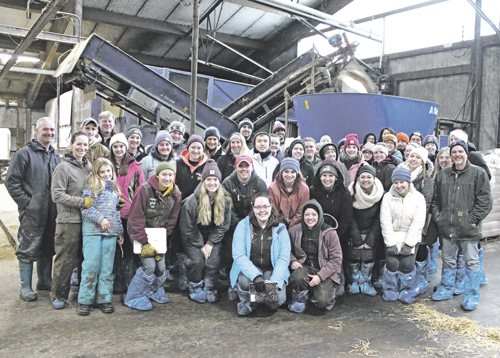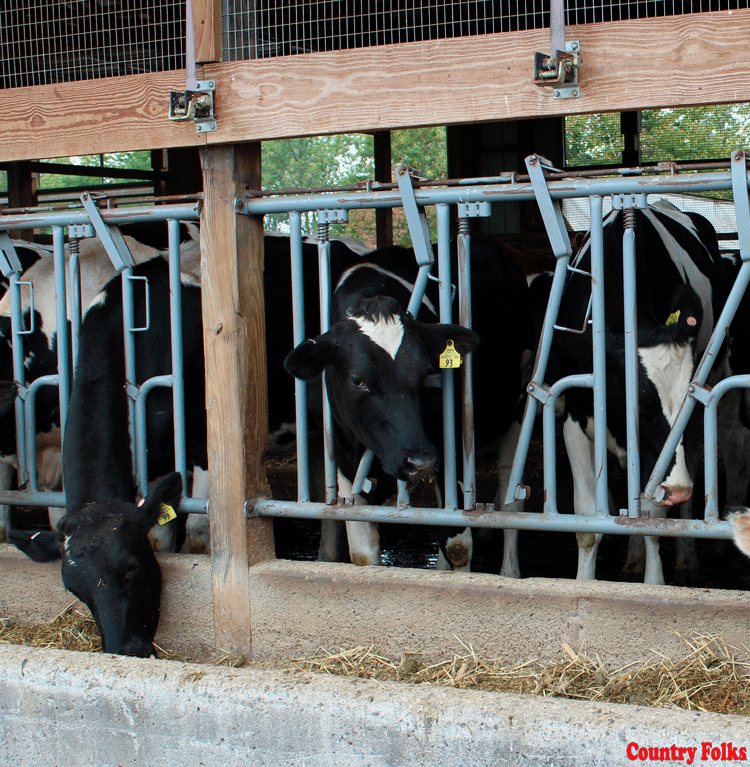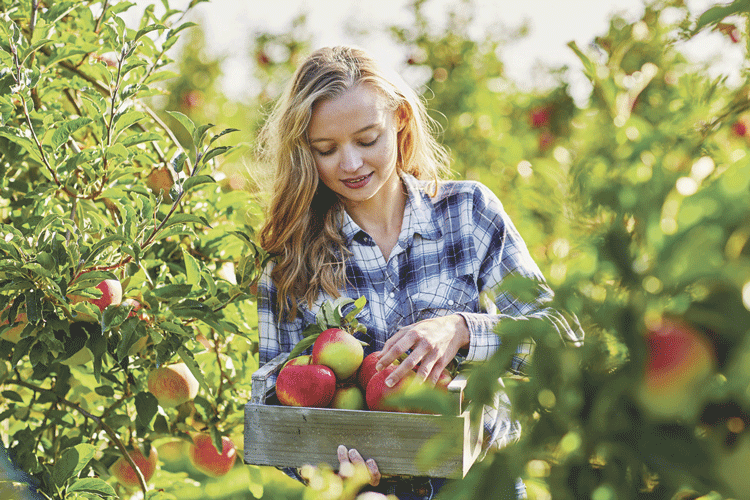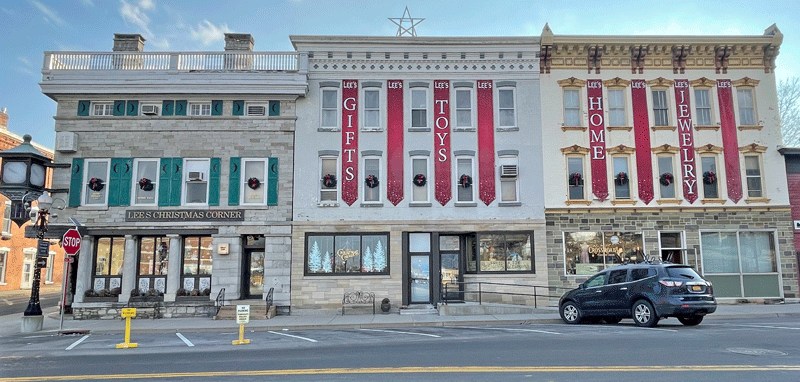
by Katrina Klobucher, Allison Morse and Echo Ball, UMass
From Jan. 6 – 11 a group of students from the University of Massachusetts, the University of New Hampshire, the University of Vermont and the University of Maine came together to travel to Prince Edward Island to tour dairy farms in the area. The tour was made possible by a generous grant from the Northeast Farm Credit’s AgEnhancement Program.
The tour started at the UNH Fairchild Dairy. Here, we learned about their CREAM program and how students take care of their own herd of cattle at the farm. We saw all aspects of their 100 cow dairy. After our tour at UNH, we loaded the bus and headed off to UMaine’s Witter Farm where we had a nice dinner provided by the Animal Science Department. The farm currently houses an average of 25 cows in a tiestall barn, all of which are part of the student-run MADD Cow program.
Monday we made the long but scenic journey to Prince Edward Island, Canada. Along our way, we crossed over the Confederation Bridge, an 11-mile bridge overlooking a beautiful frozen ocean, before settling into our hotel preparing for upcoming visits. The first farm we toured was GoldenFlo Holsteins, a six-generation farm that milks about 100 registered cows in a tiestall. We thought it was impressive that the farm has 30 – 32 excellent cows and 70 – 75 good cows. Here we also learned about the Quota System unique to Canada which many of us were unfamiliar with. Overall, we liked to see how extensive the growth of the farm was over the years, as they continuously added new facilities.
After leaving GoldenFlo Holsteins, we visited Eastside Holsteins, where they currently milk 85 Holsteins. They recently added a pristine transition barn which we were all very impressed by, in which the cows live for six weeks prior to and six weeks after calving, allowing the transition to a tiestall to go smoothly. Facilities to milk the cows while in the transition barn were designed into the building. Currently, this farm is feeding with a monorail system which many of our students had never seen before. We also thought it was interesting that Eastside has three Wagyu beef cattle which they use for breeding stock. Due to the snow, our bus got stuck while trying to leave Eastside Holsteins but with the help of a couple of tractors we were able to make it to our next stop!
Next, we visited Winterbay Farm, a family-run farm milking 100 cows in a tiestall. Currently, this farm is averaging 4.3 percent fat and 3.4 percent protein. We found it interesting they still used upright silos and just recently built another one. The cows were bred for strong genetics which was evident when walking through the barns.
Our last dairy farm that day was the Kouwenberg Farm, which is run by a family that immigrated to the area in 1987 from the Netherlands. They are milking 310 Holsteins in a double 12 parallel parlor. It was nice to see an operation that used a free stall which many students were more familiar with. It was interesting to see modern techniques being used to raise calves, such as “chew bottles” used to transition calves toward eating grain. This farm is proud to hold the title from last year of having the lowest somatic cell count on the island. We were really excited to end the day at the Potato Farm, G. Visser and Sons, where we were able to see how the potatoes were processed. It was also really cool to learn about how potatoes were sorted into many different products and that many of these products are sold at supermarkets near our universities here in the states.
The next day we woke up to a typical PEI day – a snowstorm with lots of wind. We ventured out to our first stop at Crasdale Farm. They currently have two DeLaval milking robots operating in their new free stall barn. They are milking around 94 cows, which are fed from an automated TMR feeding system. For many of us, this was the first time witnessing a dairy operation that relied so heavily on robotics. We were impressed by the family-run barn, along with how knowledgeable and truthful they were toward us.
The next farm, Redview Holsteins and Jerseys, was the first of the trip to include Jerseys in their operation. This new operation, having just been bought in 2016, is milking around 80 cows and hopes to eventually transition to an all Jersey operation, phasing out their current Holsteins. This was another family operation that uses a tiestall barn. It was interesting to our students to see the young calves in the same barn as the milking herd, which was something most of us hadn’t seen before.
Our last farm of the day was Jewelldale Holsteins, where they milk 115 cows in a spotless double-eight herringbone parlor. Their barn was built in 2009, which is a free stall barn. These producers are moving away from showing and breeding for type, focusing more on production and fertility. Calves here were housed in group pens, which is different from the individual pens we had been seeing. We ended our day with a frozen treat at Cows Creamery.
The first stop on our last day of touring was Mactalla Farm. This barn started as a tiestall and switched to free stall about eight years ago. This barn was intriguing because all of the parts were connected under one roof. Their milking operation was a double-six step-up parlor, where they milk 95 cows twice a day. This farm also grows most of their own feed, including corn, corn silage and alfalfa grass.
We then wrapped up the trip at the Atlantic Veterinary College where current students gave us a tour of their facility. We were grateful to learn more about their studies and personally ask the students any questions we had.
On behalf of all the student and faculty participants we would like to thank Northeast Farm Credit’s AgEnhancement Program for the grant that made this trip possible. We would also like to thank the farmers for so freely giving us their time and hosting us. We learned so much about the Canadian dairy industry. We are so grateful to have this opportunity and hope to return – perhaps once the weather improves!









Leave A Comment